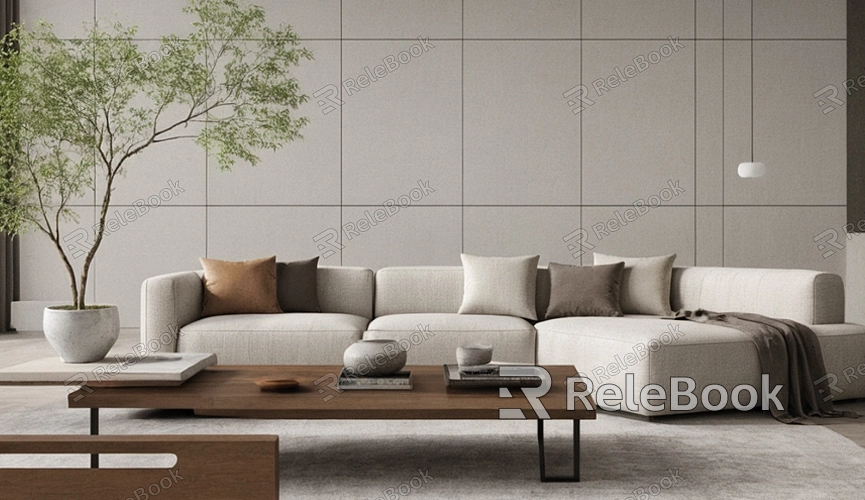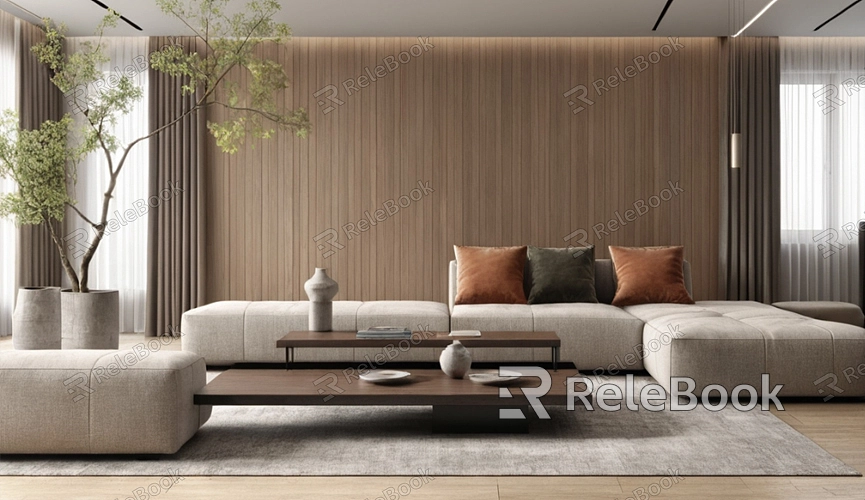What to Consider When Buying 3D Models?
As 3D technology continues to advance rapidly, 3D models are being widely used across various industries. Whether for game development, animation production, virtual reality, or industrial design, purchasing ready-made 3D models can significantly save time and costs. However, with so many 3D model marketplaces and a vast array of choices, many people feel overwhelmed. So, what are the key factors to consider when buying 3D models to ensure they meet your project needs? This article will provide a detailed analysis of several important aspects to keep in mind when purchasing 3D models.

Purpose and Intended Use of the Model
The first step in purchasing a 3D model is to clarify the model’s purpose and intended use. Different projects have distinct requirements for 3D models. For example, models used in game development typically need to be low-poly to ensure smooth performance, whereas models for film or advertising may require higher levels of detail and complexity for more realistic visual effects. Before purchasing a model, it’s important to define the specific use case—whether it’s for real-time rendering or static display—so you can narrow down your selection quickly.
Additionally, consider compatibility. Different 3D software applications have specific file format requirements. Ensure that the model’s file format is compatible with the software you’re using, such as Blender, Maya, or 3ds Max.
Model Quality and Detail
The quality of the model is one of the key aspects to focus on when purchasing. Quality doesn’t just refer to surface accuracy and aesthetics but also includes factors like polygon count, the clarity of the mesh, and the logicality of the topology. Overly complex models can add to the processing load and slow down project performance, while overly simple models may not meet the desired visual standards. Before purchasing, it’s a good idea to review preview images or videos of the model to carefully assess surface detail, texture mapping, and overall appearance.
In addition to the visual aspects, pay attention to the structural soundness of the model. If the topology is poorly constructed, issues may arise during modification or usage. This is especially crucial for models intended for animation—make sure the rigging and skeleton structure are complete for easier animation creation.

Polygon Count and Performance Optimization
Polygon count is a critical factor that determines the performance of a 3D model. While a high polygon count allows for more detailed visuals, it also requires more computing power, which can negatively affect project performance. This is particularly important for projects that require real-time rendering, such as games and virtual reality applications. Keeping the polygon count within a reasonable range is essential for maintaining good performance.
Therefore, before purchasing, carefully check the model’s polygon count and consider the performance demands of your project. If your project requires high performance in real-time rendering, opt for a low-poly model and ensure it has well-optimized UV maps to achieve great visuals with fewer polygons.
Texture and Material Quality
The realism of a 3D model isn’t just determined by its geometry—materials and textures play a critical role as well. When purchasing a 3D model, pay special attention to whether it comes with high-quality textures and materials. The resolution of the textures, the complexity of the materials, and how light interacts with them will directly affect the final visual outcome.
Typically, 3D models include several common texture types such as diffuse maps, normal maps, and specular maps. Check whether the model comes with a complete set of textures and materials and ensure the resolution is sufficient for your project. If the texture resolution is too low, the final product might appear blurry or unsatisfactory.
Model Editability and Customization
In many projects, purchased 3D models may need some modifications and adjustments to fit specific needs. Therefore, a model’s editability is another important factor to consider. Checking whether the model has a well-organized topology, clear UV mapping, and appropriate layer structuring (e.g., whether the model is divided into sub-components) will help you assess its editability.
Moreover, it’s essential to know whether the model includes the source files (e.g., OBJ, FBX). If your project requires substantial modifications or customization, having these source files will make the workflow much smoother.
Licenses and Copyright
Copyright is a crucial issue that cannot be ignored when purchasing 3D models. Ensure that the model you are purchasing comes with a valid license to avoid potential legal issues. Many 3D model platforms offer different types of licenses, including personal use, commercial use, or unlimited use. Depending on your project needs, choose a license that allows you to legally use the model.
Pay special attention to restrictions—some models may prohibit commercial use or resale. Therefore, it’s important to read the licensing terms carefully before purchasing to avoid any unnecessary complications later on.
After-Sales Support and Updates
Some high-quality 3D models come with after-sales support and future updates. If your project has a long development cycle or requires future upgrades or fixes, after-sales support can be crucial. When purchasing, it’s advisable to choose model vendors that offer ongoing support or have community feedback mechanisms in place, ensuring you can get technical assistance and updates when needed.
Additionally, if the 3D model includes complex features like animation or rigging, having access to detailed documentation and tutorials is essential. This will help you get up to speed faster and minimize issues during the usage process.
Price and Value for Money
Of course, price is another factor to consider when purchasing 3D models. High-quality 3D models tend to be more expensive, but that doesn’t mean the most expensive models are always the best fit for your needs. Choosing a model with the best value for your project is key.
It’s a good idea to browse different model platforms, compare prices and quality, and choose models that meet your requirements. Sometimes, discounted bundles or model packs may offer better value. The important thing is to ensure that what you pay aligns with the model’s quality and functionality.
Buying 3D models requires careful consideration of various aspects, from the model’s intended use, quality, and performance to textures, licensing, and after-sales support. By clearly defining your project requirements, thoroughly evaluating the model’s details and performance, and selecting models with reliable licensing and support, you can ensure that the purchased models truly add value to your project. Mastering these tips for buying 3D models will help you make better decisions. If you want to explore and download high-quality 3D models and textures, visit the Relebook website for professional resources.
FAQ
How do I ensure a 3D model is compatible with my software?
Before purchasing, carefully review the model’s file format specifications and make sure the format is compatible with your software. Common formats include OBJ, FBX, and STL, which are supported by most 3D software programs.
Can purchased 3D models be modified?
Most 3D models can be modified, but ensure that the model has a clear topology and editable source files. You can check the model description to see if the original files are included.
How can I avoid copyright issues when purchasing 3D models?
Purchase from legitimate 3D model platforms and read the licensing terms carefully before buying. Make sure the license allows for the intended use, such as commercial use.
How do I determine if a model’s polygon count is appropriate?
This depends on the project’s needs. For projects requiring real-time rendering, opt for low-poly models. For static displays or high-end animations, high-poly models may be necessary for better visual effects.
What should I do if there’s a problem with the model I purchased?
Most reputable platforms offer after-sales support. If you encounter an issue, contact the seller for assistance, or check if the platform has a refund policy.

